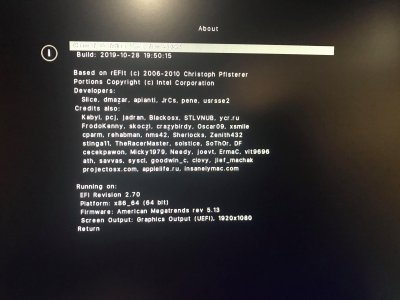I tested this and it doesn't work. While I can spoof the subsystem-id with Clover properties (you would use subsystem-id, not RM,subsystem-id in this case), the stock driver still doesn't work, as I guess it checks deeper.
I had a few projects with this build I was going to try. One I was interested in is seeing if we can change the subsystem-id on a deeper level.
The idea is here:
https://forums.macrumors.com/thread...nics-to-use-small-tree-macos-drivers.1968456/
I'm wondering if that's even possible to do that to the i211, but I just got an Ubuntu install working last night. Linux hates the WD Black SN750 (which unfortunately I have two of in this build, should have just got all Samsung but I got WD because of the Evo Plus bug back then, yet Samsung fixed that) so I temporarily switched AHCI to Intel RST in BIOS so the installer couldn't see them (it chokes otherwise), installed to a USB drive, and then switched back.


